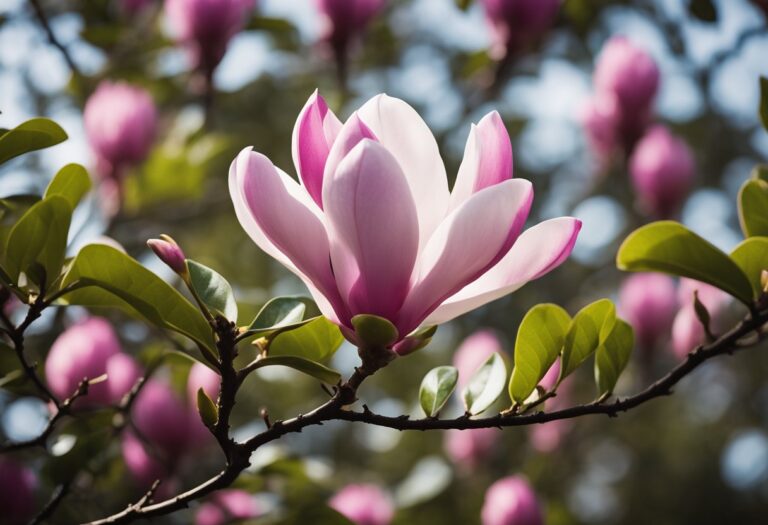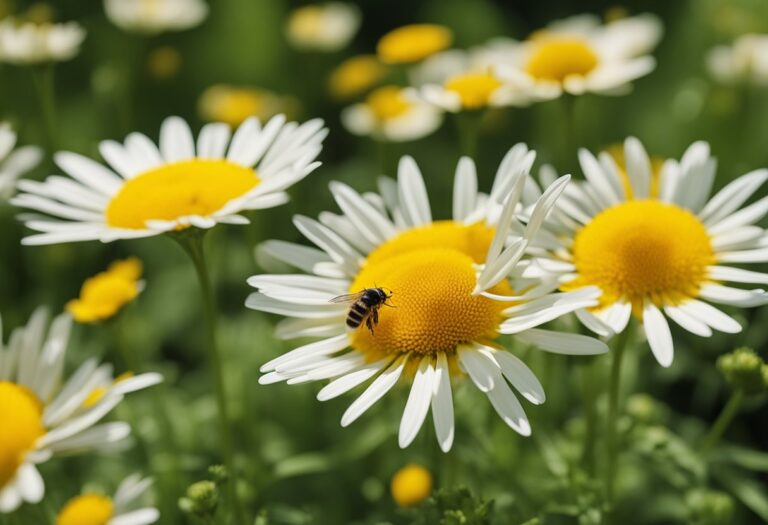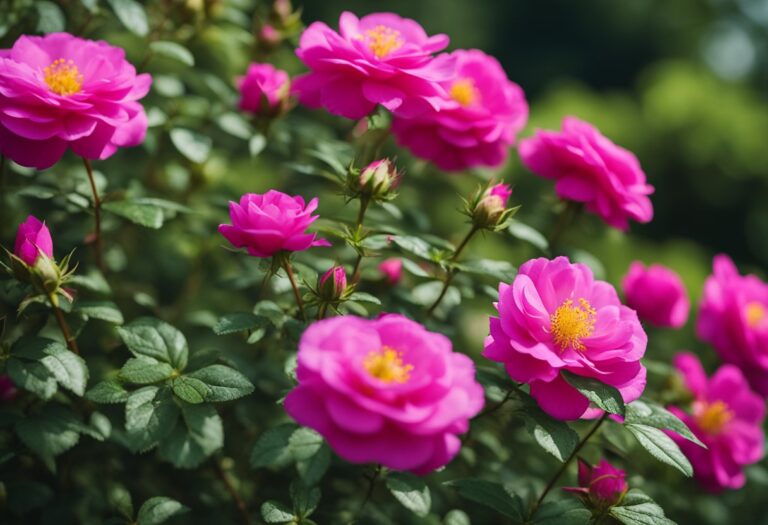Identification of Iris Robusta ‘Gerald Darby’
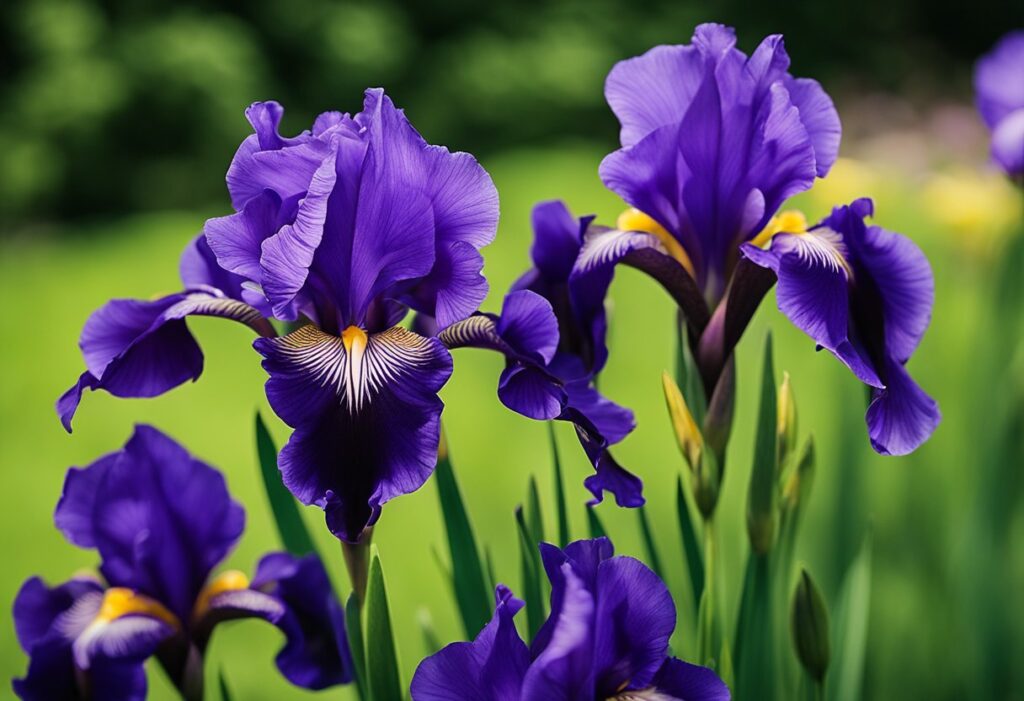
Your garden can be graced by the distinct attributes of Iris x robusta ‘Gerald Darby’, a rhizomatous perennial recognized for its unique features. Here’s how you can identify this plant:
Leaves:
- Shape: Narrow, arching, and sword-shaped.
- Color: Generally green with a notable purple stain at the base.
Stems:
- Color: Purplish stems that support the flowers.
- Bearing: Typically unbranched.
Flowers:
- Color: Violet-blue, adding a pop of color.
- Formation: They boast 3-4 flowers per stem.
- Signals: Each flower is marked by deep yellow signals.
- Falls: Mostly white falls with a yellow flash and dark veins.
Height:
- Can grow to a height of approximately 1.2 meters (nearly 4 feet).
Bloom Time:
- The blooming season occurs from late spring to early summer.
Growth Requirements:
- Being a marginal aquatic plant, it’s best situated near water or in a water garden.
When planning your landscape or water garden, the Iris x robusta ‘Gerald Darby’ provides both lush foliage and striking blooms that can enhance your space aesthetically. Its distinctive coloration, particularly the purple-toned base of the leaves, sets it apart from other irises, making it a preferred choice for gardeners looking to inject a touch of sophistication into their plant collection.
Cultivation and Care
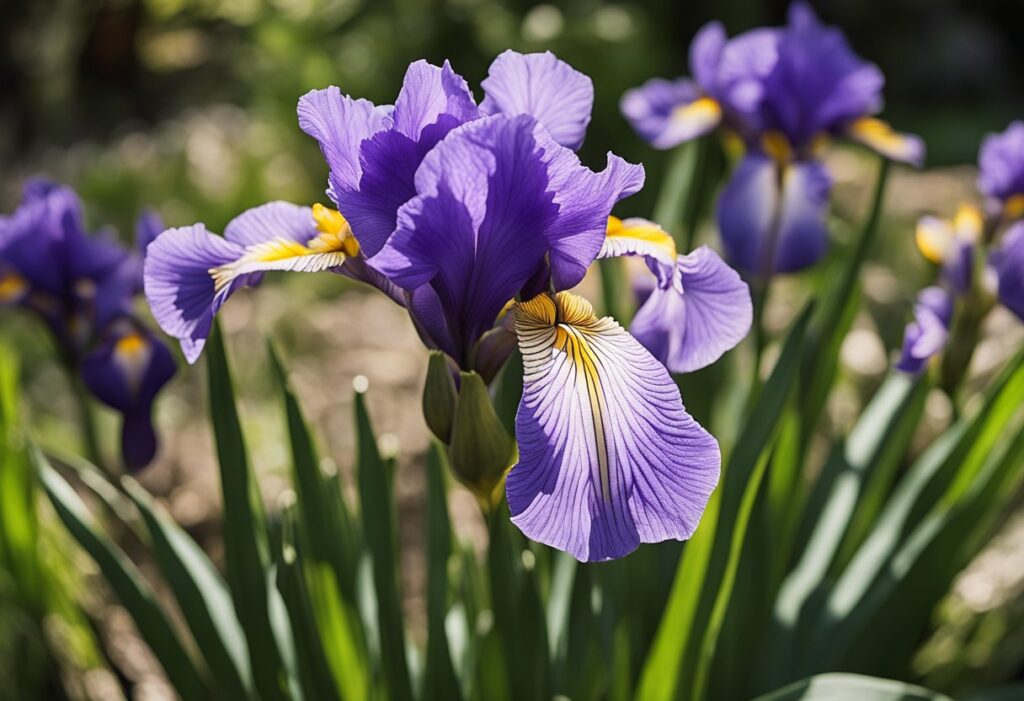
Successful growth of Iris robusta ‘Gerald Darby’ hinges on following specific planting guidelines, delivering appropriate water and nutrients, and carrying out regular pruning and maintenance.
Planting Guidelines
To establish Iris robusta ‘Gerald Darby’, select a location with full to partial sunlight.
Prepare the planting area by loosening the soil to a depth of 12-16 inches and incorporating organic matter to ensure good drainage.
Plant the rhizomes at a shallow depth, with the top of the rhizome slightly exposed, and space them about 18-24 inches apart to accommodate mature size.
Watering and Nutrition
Watering is crucial, particularly during the growing season. Keep the soil consistently moist, but not waterlogged, to mimic the Iris ‘Gerald Darby’ natural wetland habitat.
Fertilize sparingly; a balanced, slow-release fertilizer applied in early spring can support vigorous growth and flowering.
Pruning and Maintenance
Pruning and maintenance are straightforward. Remove dead foliage and spent flower stems to promote healthy growth and prevent disease.
Divide the clumps every few years in late summer to rejuvenate and propagate the plants, ensuring their longevity and robustness in your garden.
Propagation Methods
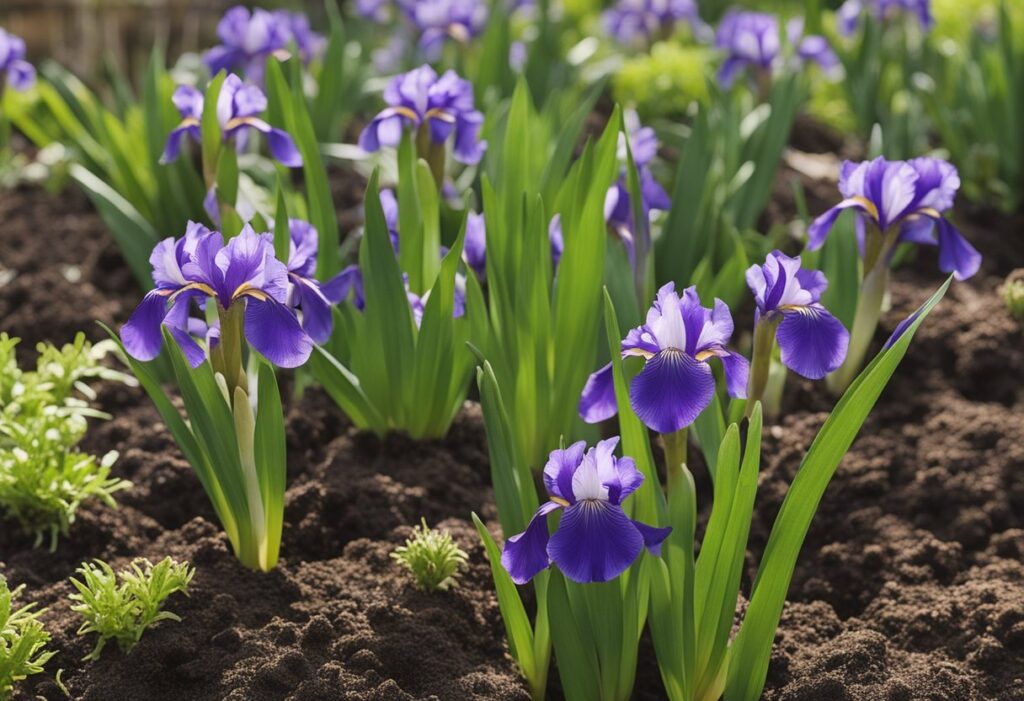
To propagate Iris x robusta ‘Gerald Darby’, you have two primary methods: division and rhizome cuttings. Both methods should be carried out in late summer after the flowering season.
Division
Step 1: Lift the clump of irises using a fork or spade, taking care not to damage the rhizomes.
Step 2: Gently shake off excess soil and locate the natural divisions in the clump.
Step 3: Separate rhizomes by snapping at the natural joints or cutting with a clean, sharp knife.
Step 4: Trim the leaves to about a third of their height to reduce transpiration stress.
Step 5: Replant divided rhizomes promptly, keeping the top of the rhizomes slightly above soil level. Space divisions 12-24 inches apart.
Rhizome Cuttings
- Take a healthy rhizome and cut a 3-4 inch section that includes at least one growing point.
- Allow the cut surface to callus over for a day.
- Plant the rhizome cutting horizontally, with the growing point facing upwards and just below the soil surface.
- Make sure the soil is well-draining and moderately fertile.
For both methods, keep the soil moist but not waterlogged.
An initial application of a balanced fertilizer can help establish your Iris x robusta ‘Gerald Darby’. However, avoid too much nitrogen, which can promote rot.
Landscape Uses
When incorporating Iris x robusta ‘Gerald Darby’ into your landscape, you’re choosing a plant that not only brings visual interest but also adapts well to a variety of water-related garden settings.
- Water Gardens: Perfect for your water garden, this iris thrives in standing water of several centimeters deep. The purple accents and violet-blue flowers contrast well with chartreuse foliage typically found near ponds.
- Rain Gardens: Utilize ‘Gerald Darby’ in rain gardens to handle medium to wet soils, helping to filter runoff and improve water quality.
Consider the following for optimal placement:
| Environment | Suggested Use |
|---|---|
| Full Sun | Ideal for maximized flowering. |
| Partial Shade | Suitable, though may result in fewer blooms. |
| Soil Conditions | Prefers rich, organic soils; amend with compost or peat moss. |
Notable Attributes:
- Multi-season interest: Even when not in bloom, the foliage stained with purple at the base maintains decorative appeal throughout the growing season.
- Height & Spread: Expect a growth of about 2-3 feet in height and 1.5-2.5 feet wide, so plan your spacing accordingly.
Group Plantings: Amplify the visual impact by planting ‘Gerald Darby’ in groups. The collective of sword-shaped leaves and structured blooms creates a focal point in the garden.
For best practices: Engage in regular maintenance by dividing clumps every few years to promote vigorous growth and prevent overcrowding.
Growth Habit and Characteristics
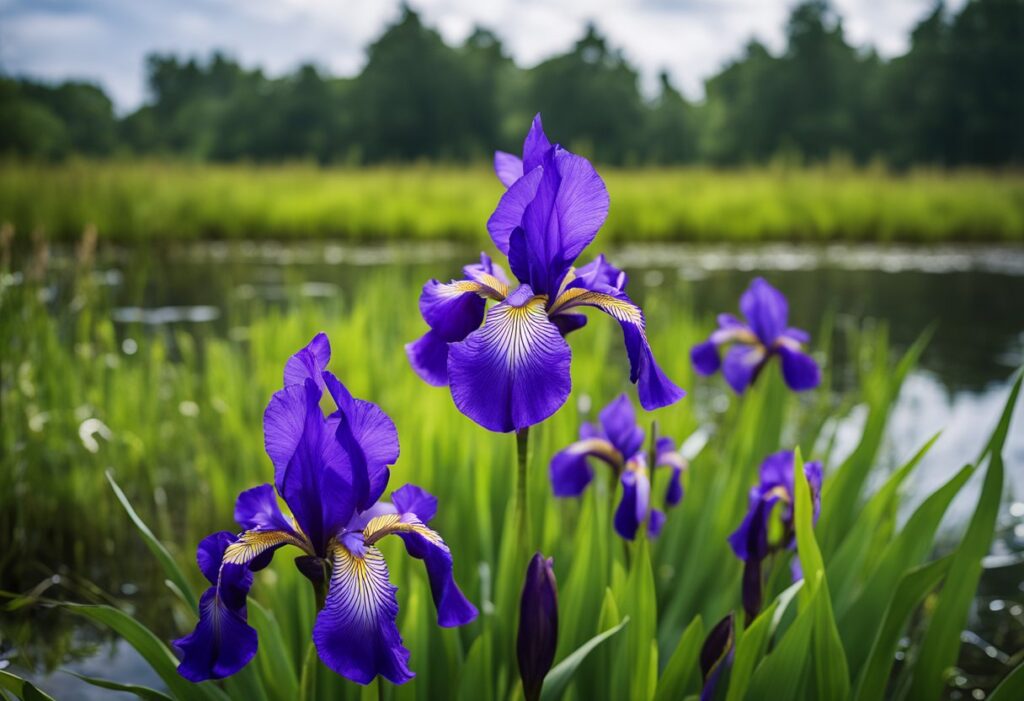
Iris ‘Gerald Darby’ (Iris x robusta ‘Gerald Darby’) is a robust perennial that presents a distinctive growth habit well-suited for your garden, particularly around water features.
Foliage: This plant boasts narrow, sword-shaped leaves. The foliage is unique; you’ll notice a striking purple staining at the base of the leaves in spring.
Height and Spread: Expect the ‘Gerald Darby’ to reach a height of up to 24 inches, extending to 3 feet when flowering, with an equal spread of 24 inches. For optimal growth, space individual plants approximately 18 inches apart.
- Planting Depth: Cultivate the soil to a depth of 12-16 inches, integrating organic matter for loose, fertile soil.
Bloom Characteristics: In late spring to early summer, unbranched purplish stems produce 3-4 violet-blue flowers. These blooms carry deep yellow signals on mostly white falls and are accented with dark veins.
Plant Hardiness: ‘Gerald Darby’ thrives in hardiness zones where conditions mimic its native habitat.
| Aspect | Detail |
|---|---|
| Sun Exposure | Full sun to partial shade |
| Water Requirements | Consistent moisture, well-drained wet soils |
| Soil Type | Rich, loamy, medium-wet to wet |
Frequently Asked Questions

In this section, you’ll find answers to common inquiries about cultivating, maintaining, and appreciating the beauty of Iris Robusta ‘Gerald Darby’.
How do I care for Iris Robusta ‘Gerald Darby’ in different seasons?
In the spring, clear away any debris and dead foliage to make way for new growth.
During the summer, maintain consistent moisture, especially when blooms are forming.
In the fall, cut back the foliage to discourage overwintering pests.
In winter, mulch lightly after the ground freezes to provide winter protection.
What are the optimal planting conditions for Iris Robusta ‘Gerald Darby’?
Choose a location with full to partial sun and fertile, well-draining soil.
Enrich the planting area with organic matter to help ensure vitality. This iris prefers slightly acidic to neutral pH levels in the soil.
Can Iris Robusta ‘Gerald Darby’ thrive in standing water environments?
Yes, Iris Robusta ‘Gerald Darby’ is well-suited to wet conditions and can thrive at the edges of ponds or in a bog garden setting, where the soil remains consistently moist.
What are the blooming characteristics of Iris Robusta ‘Gerald Darby’?
This iris variety typically blooms from late spring to early summer, producing striking violet-blue flowers.
The blooms feature deep yellow signals on mostly white falls, with 3-4 flowers per purplish, unbranched stem.
How do I propagate Iris Robusta ‘Gerald Darby’ effectively?
Propagation is most commonly done by division after blooming, in late summer.
Separate the rhizomes carefully and replant them at the appropriate spacing to encourage vigorous growth for the next season.
Are there any common pests or diseases that affect Iris Robusta ‘Gerald Darby’?
Iris Robusta ‘Gerald Darby’ can be susceptible to iris borer and root rot. This is especially true in overly wet conditions.
Monitor for pests and signs of disease regularly. Apply appropriate treatments at the first sign of trouble to keep your iris healthy.







